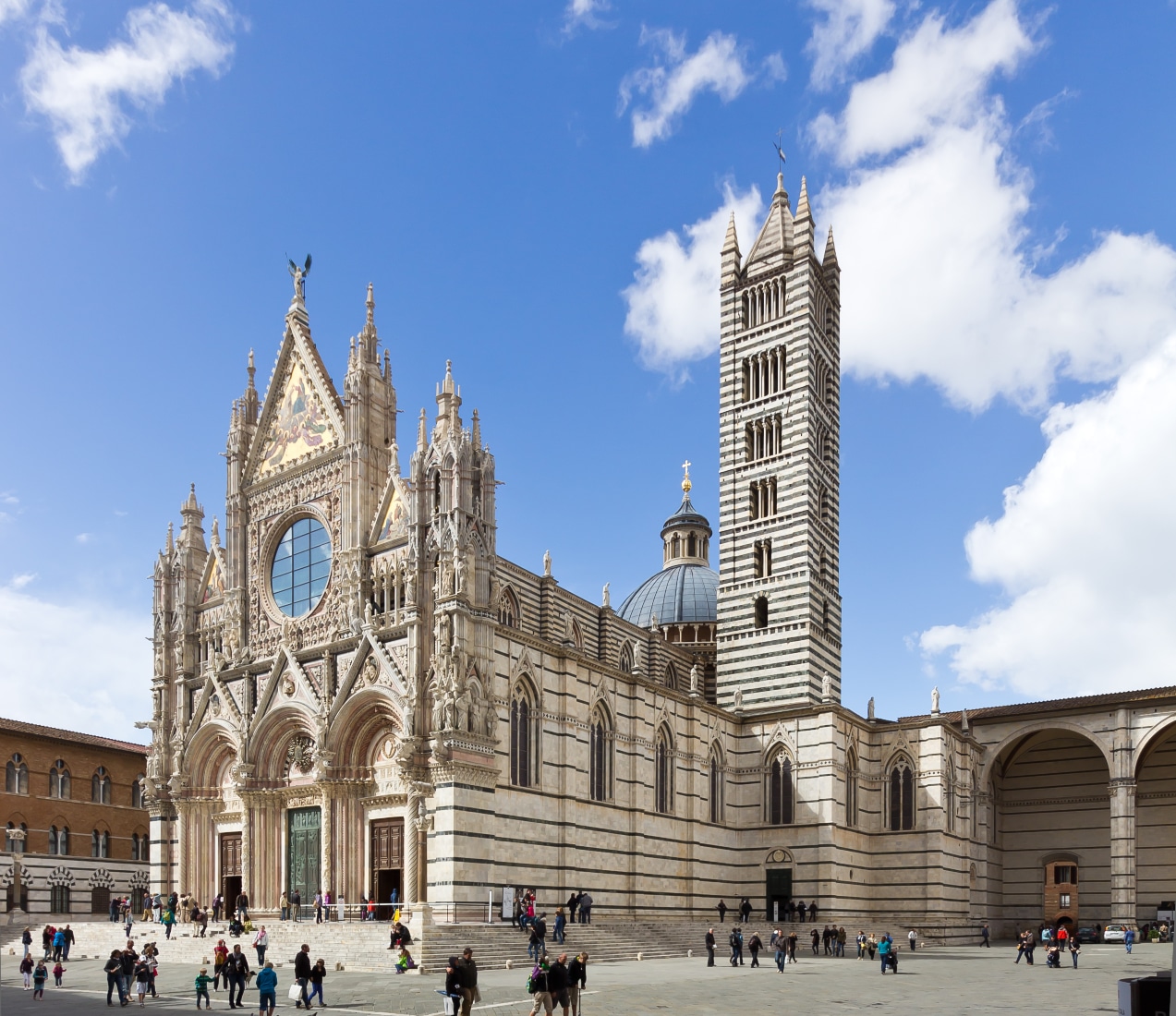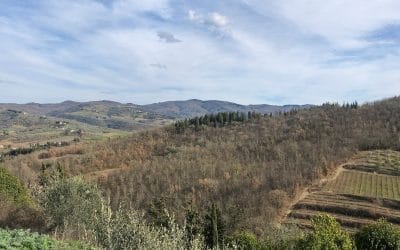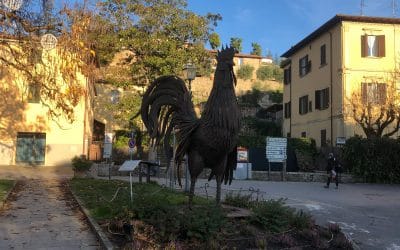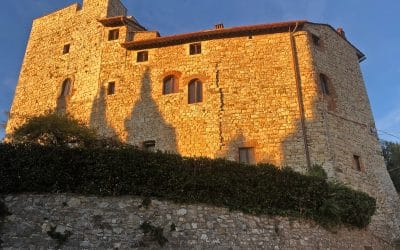The Cathedral of Siena
The Cathedral of Siena dedicated to Santa Maria Assunta
The Cathedral
A wonderful expression of Romanesque-Gothic art, the Cathedral of the Assumption raises its luminous and extremely rich envelope on a platform with steps. Traditionally, the consecration of the basilica dates back to 1179, but construction work continued throughout the 13th century, during which the positioning of the facade was decided and the dome and bell tower were completed.
The Cathedral has a nave and two aisles, in the shape of a Latin cross, with a hexagonal dome covered with lead slabs, and covered on the outside with a black and white marble face with black and white bands, with clear reference to the balzana, the Sienese coat of arms, symbol of the city and civil power. The wealth of works of art, belonging to the most different periods and styles, make the Sienese Cathedral a real museum, where it is possible to admire many masterpieces inserted in the context for which they were conceived.
The ambitious project to build a new Cathedral much larger and more imposing than the pre-existing one was born in 1322. The first stone was laid in 1339, the year the work real started. Following the original project, the current Cathedral would become the transept of an immense temple, whose central nave would wind along the area of the current Jacopo della Quercia square. The construction of the new Cathedral continued until 1348, the year of the great plague, when it was abruptly interrupted, and was suspended in 1357, following the sudden fall in population, collapses affecting some of the supporting structures and the serious economic difficulties that inevitably arose in the face of such a grandiose project, not commensurate with the city’s actual possibilities. Having demolished the unsafe structures, the remains of the right aisle, opened by five colossal arches, of part of the left side and of the monumental facade, called Facciatone, opened by a very high two-storey window; along the left side opens one of the most beautiful doors of the Sienese Gothic style, adorned with a rich decoration, which leads to the marble staircase that descends to the baptistery square. The “Duomo Nuovo”, also perhaps because of its incompleteness, is one of the most evocative artistic feats of the city.
Santa Maria della Scala Hospital
The existence of a complex destined to host and assist pilgrims, poor and orphans, later to become a real hospital, is documented with certainty since 1090, but almost certainly the foundation is older, attributed by a medieval legend to a cobbler named Sorore, who died in 898.
The Scala Hospital, which owes its name to its position in front of the stairs leading to the Cathedral square, has had, thanks to the support of the government and the conspicuous bequests of the great Sienese families, an enormous importance in the history and economy of the city, as also demonstrated by the vast extension of the building.
Until a few years ago still operating as a health facility, in recent years it has undergone a progressive restoration and adaptation, becoming one of the cultural centres of Siena, home to the Archaeological Museum, temporary exhibitions and monumental spaces.
The long facade overlooking the Cathedral square is made up of various buildings that have undergone continuous modifications over the centuries; the oldest part is the central part, consisting of the side of the Annunziata church, with a marble facing on the lower floor and large Renaissance windows on the upper one. Next to the church, on the right, there is a Gothic style building called “Palazzo del Rettore” and, on the left, a complex called “Casa delle Balie”, in whose central band in the twentieth century a row of mullioned windows was opened in style, both probably built at the end of the fourteenth century.
Many Sienese artists participate in the interior decoration of the church and the rooms of the Scala Hospital, making the structure one of the key points, together with the Palazzo Pubblico and the Cathedral, to understand the evolution of the city’s figurative culture.
Discover Chianti with its castles…
Greve in Chianti
Greve in Chianti A paradise for lovers of greenery The history of Greve in Chianti is strongly connected with the beautiful Castle of Montefioralle, located above the city. This small fortified village is a real jewel, where you will find yourself walking along narrow...
Gaiole in Chianti
Gaiole in Chianti A market town for castles and surrounding areasGaiole in Chianti in the past was a city busy with local traffic, but after the end of the conflicts between Florence and Siena, it turned more towards agriculture, strengthening its position as a market...
Vertine
Vertine Fortified oasis in the Chianti mountains Vertine is one of the best preserved examples of military architecture in Chianti and more precisely in the municipality of Gaiole. The excellent condition in which it is located today, especially the castle with its...




